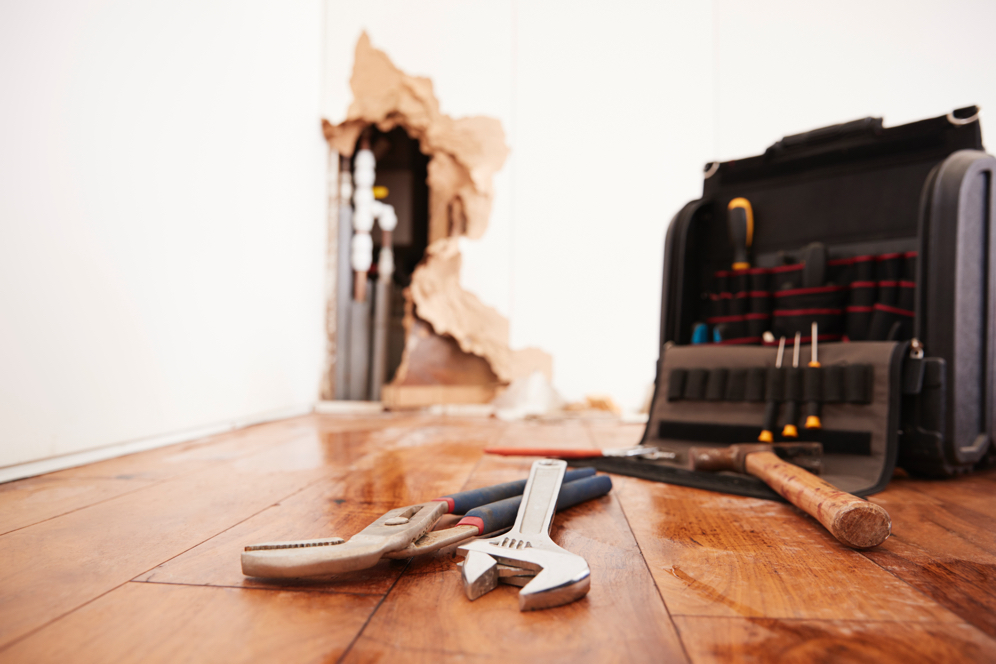Flooding is by far one of the worst and most annoying challenges a homeowner can come across.
Once you notice the first signs of flooding, you should react immediately and take all the necessary steps to prevent mold and other flooding and water damage from happening. Repairing the flooding damage can be extremely hard, not to mention costly. In addition, you have to act on it fast, otherwise, the damage will very likely be permanent.
Mold should not be taken lightly, as it can be extremely dangerous for your health. It can cause eye, throat, and skin irritation, as well as respiratory problems.
In the following text, we’ll tell you how you can combat flooding and prevent mold from infecting your home.
1. Safety Comes First
The first thing you need to do is turn off the power in the flooded area. If you have standing water in the room, make sure not to use any electrical appliances in it. Moreover, you should evacuate the room’s furnishings and items to create more workspace.
Another important thing you should do is put on protective gear. You have no idea what’s in that water. For all you know, it could be contaminated or dirty. So, to prevent any infections, you should wear gloves, as well as eye and mouth protection.
If you can, try to locate the source of the flood. Sometimes it’s quite obvious (like a pipe burst or excess rainfall), but other times it can be just a sneaky leak. Fix what you can, and contact professionals when you can’t.
2. Soak up the Water
Mold Solutions will effectively eliminate the standing water with professional equipment, but you can also get started by soaking up the water yourself. Use a water vacuum cleaner to pick up the water. It’s a good temporary solution until the situation can be professionally handled.
3. Air Circulation is Key
You must always remember not to let humid air linger for too long. Humidity attracts mold, and you have to get the air out in order to remove the mold. Keep fresh air coming in and keep it moving.
If you’re not overflooded and you have electricity, use fans, AC units, blower heaters, whatever you have on hand. Keep all the windows open, provided that it’s not raining outside (obviously). Air circulation can also save your carpets from additional damage.
4. Use Dehumidifiers
You can use dehumidifiers to pick up moisture from the air and lower the humidity in your home. In addition to limiting mold growth, dehumidifiers can keep your floors and covers as dry as possible.
Heating up the room will encourage evaporation, which will make the dehumidifiers even more efficient. Unfortunately, dehumidifiers won’t help you right after the flooding. They’re considered more of a finishing touch when you’re dealing with water damage.
5. Clean Carpets and Flooring
Most of your flooding damage usually goes straight to your floor, depending on the material. Tile and marble floors tend to be least susceptible to mold and water damage, while wood remains the most tricky to get the moisture out of.
Additionally, if you have carpets, dry them immediately. Carpets soak water up incredibly well, and they can develop mold in a matter of hours if left unattended. Use a vacuum cleaner to suck up as much water as possible, then you’re best off leaving the carpets out to dry. In the meantime, mop up your floors as best as you can.
6. Sanitize Everything
After a flood, you have two main problems — moisture and infection. After you’ve removed as much of the moisture as possible, it’s time to handle the mold and other infections. Sanitize the floors, the walls, everything. Your best friends in this job are heat and chemicals. Depending on the surface you’re cleaning, choose your best weapon and sanitize your home.
7. Always Be Cautious
You should stay on the lookout even after you’ve successfully repaired the damage. Mold loves to hide in dark places, only to spread after you’ve long forgotten about the flood. Check for any mold growth in the months and years after a flood, in order to keep your house in perfect condition.
Conclusion
Most importantly — don’t lose hope. Although repairing flood damage is a time-consuming and stressful process, it can be much less severe if you hire a good contractor.
If you’ve suffered flooding damage or have mold in your home, and you’re in the Chicagoland or Greater St. Louis areas, be sure to call us at Mold Solutions or fill out our online form. We’ll diagnose the damage and help you keep your family and your home free from mold.








